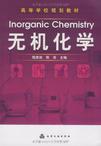无机化学
出版时间:2009-8 出版社:化学工业出版社 作者:陆家政,陈菲 主编 页数:307
前言
自2001年国家教育部提倡在高等院校实行双语教学以来,很多高等院校都为化学及相关专业的本科生开设了无机化学双语课程。我们在药学专业无机化学课上也进行了积极尝试,课程受到学生的广泛欢迎,但遗憾的是至今很难找到切合相关专业的英文版《无机化学》教材,国外原版教材虽然可保持语言文字上的原汁原味,但往往内容太多,与国内高等院校现行的教学学时相差甚远;国内学者编著的教材可供选择的也为数不多。而我们经过几年的努力,积累了一定的教学经验,因此,联合相关院校组织无机化学双语教学第一线的教师编写了本书。在本书编写的过程中,对无机化学课程的基本内容进行精选,加强基础,突出重点。删除了以往教材中存在的大量的复杂公式和繁琐计算的推导以及较深奥的理论分析和阐述,力求做到既言简意赅,又具有较完整的无机化学知识体系。竭力保持语言上与外版教材的一致性,又能使其内容更精练、通俗易懂,且更切合目前国内相关专业的教学实际。同时力求使之既能体现无机化学课程的专业基础课特色,又可提高学生的英语应用能力。希望此书的出版能够起到抛砖引玉的作用,为无机化学双语教学质量的进一步提高做出贡献。全书由陆家政、陈菲主编并统稿。参加编写理论部分的有:陈丽江(第1章),曾宪栋(第2、3章),陈菲(第3章),蔡秀兰(第4章),管小艳(第5章),蒋京(第6章),蒋东丽(第7章),何丽新(第8章),姚秀琼(第9章),曾琦华(第10章),陆家政(第11章),贺丽敏(第12章),伍小云、李君君(第13章)。实验部分由陈菲、陆家政、李雪华和赖泽锋编写。本书在编撰过程中得到了多方的支持。其中广东药学院教务处将其立项为特色教材予以支持和帮助,在此表示衷心的感谢。本书可作为高等院校本科药学及化学类相关专业的无机化学双语教材,也可作为化学专业英语课的教材或参考书。鉴于编者的水平和能力有限,书中尚有不妥之处,恳请专家以及使用本书的老师和同学批评指正。
内容概要
本书针对药学类专业无机化学的双语课程,将无机化学课程的基本内容进行精选,结合国内高校教学实际,删除原版教材中大量的复杂、繁琐及较深奥的部分,力求使之既能体现无机化学课程的专业基础课特色,又可提高学生的英语应用能力。 鉴于医药学专业学生理论与实验课程并重的特点,全书包含两大部分:Ⅰ Inorganic Chemistry与Ⅱ Inorganic Chemical Experiments。Part Ⅰ includings thirteen chapters:1 Introduction,2 Structures of Atoms,3 Chemical bonds,4 Thermochemistry,5 Chemical Kinetics,6 Chemical Equilibrium,7 Solutions,8 Solubility Equilibrium,9 Acid?Base Equilibria,10 An Introduction to Electrochemistry,11 Chemistry of Coordination Compounds,12 Nonmetals and Semimetals,13 Metals。Part Ⅱ includings three chapters:1 Basic Techniques of Experimental Chemistry,2 Typical Chemical Laboratory Apparatus,3 Experiments。 本书可作为高等院校本科药学及化学类相关专业的无机化学双语教材,也可作为化学专业英语课的教材或参考书。
书籍目录
Ⅰ Inorganic Chemistry Chapter 1 Introduction 1.1 Observations and Conclusions 1.2 The Scientific Method 1.3 Units of Measurement 1.4 Advice on Studying Chemistry Key Words Chapter 2 Structures of Atoms 2.1 Particles in Atoms 2.2 The Bohr Model 2.3 The Wave Theory of Electrons 2.4 Heisenberg?s Uncertainty Principle 2.5 The Schr?dinger Equation 2.6 Quantum Numbers 2.7 Shapes of Atomic Orbitals 2.8 Many?Electron Atoms 2.9 Valence Electrons 2.10 The Periodic Table and Electronic Configurations of Atoms 2.11 The Periodicity of the Properties of Elements and Atomic Structure Key Words Exercises Chapter 3 Chemical bonds 3.1 Ionic Bonds 3.2 Covalent Bonds 3.3 Lewis Dot Symbols and Lewis Structure 3.4 Sigma and Pi Bonds 3.5 Bond Polarity 3.6 Bond Energy, Bond Length and Bond Angle 3.7 Molecular Geometry 3.8 The VSEPR Model 3.9 Hybrid Orbitals 3.10 Molecular Orbitals 3.11 Intermolecular Force Key Words Exercises Chapter 4 Thermochemistry 4.1 First Law of Thermodynamics 4.2 Enthalpy and Enthalpy Change 4.3 Hesss Law 4.4 Entropy and the Second Law of Thermodynamics 4.5 Spontaneous Processes and Gibbs Free Energy 4.6 Temperature and Direction of Spontaneous Change 4.7 Standard Free Energy of Formation and Standard Free Energy of Reaction Key Words Exercises Chapter 5 Chemical Kinetics 5.1 Reaction Rates 5.2 Theories of Reaction Rates 8 5.3 Effect of Concentration on Rate of Reaction 5.4 Rate and Temperature 5.5 Catalysis Key Words Exercises Chapter 6 Chemical Equilibrium 6.1 Concept of Equilibrium 6.2 Equilibrium Constant 6.3 Le Ch?telier?s Principle Key Words Exercises Chapter 7 Solutions 7.1 Ways of Expressing Concentration 7.2 Colligative Properties Key Words Exercises Chapter 8 Solubility Equilibrium 8.1 Saturated Solutions and Solubility 8.2 Solubility Equilibria 8.3 Factors Affecting Solubility 8.4 Predicting Precipitation Reaction 8.5 Selective Precipitation134 8.6 Application of Precipitate on Medicine Key Words Exercises Chapter 9 Acid?Base Equilibria 9.1 Acids and Bases 9.2 Ion Product of Water 9.3 Strength of Weak Acids and Bases 9.4 The pH of Weak Acids and Bases 9.5 The Common?Ion Effect 9.6 Buffer Solutions Key Words Exercises Chapter 10 An Introduction to Electrochemistry 10.1 Oxidation?Reduction Reactions …… Chapter 11 Chemistry of Coordination Compounds Chapter 12 Nonmetals and Semimetals Chapter 13 MetalsⅡ Inorganic Chemical ExperimentsAppendixReference
章节摘录
插图:In science, a theory is a unifying explanation of the general principles of certain phenomena with considerable evidence or facts to support it. Hypotheses that survive many experimental tests of their validity may evolve into theories.A scientific theory or law represents a hypothesis, or a group of related hypotheses confirmed through repeated experimental tests. Science progresses by cycles of suggested theories and tests by experiment. No matter how elegant a theory is, its predictions must agree with experimental results if we are to believe that it is a valid description of nature. So as soon as a new theory has been suggested, new experiments should be launched to test it. If the experimental results support the theory, it is accepted. If they do not, it must be modified or a new theory invented. Accepted scientific theories and laws become a part of our understanding of the universe and the basis for exploring less well-understood areas of knowledge. In part because of the unavailable necessary technology, probing or disproving a theory can take years, even centuries. For example, it took more than 2000 years to work out atomic theory proposed by Democritus, and ancient Greek philosopher.
编辑推荐
《无机化学》:高等学校规划教材。
图书封面
评论、评分、阅读与下载
用户评论 (总计2条)
- 这书是我们老师编的,现在上他的元素无机化学(双语)要用这书。但是发现里头讲得很简单,不过还是很适合对化学专业英语有兴趣的人。还有一个特点就是,书中第二部分是一些关于实验的英文表述,在同类书中很少有!
- 这本书英语写得不太好,有很多语法错误,讲的内容也比较少
相关图书
- 化工分离技术
- 大学计算机基础实验教程
- 现场总线仪表技术
- 电子设计自动化
- ASP.NET2.0程序设计案例教程
- 农业生产资料营销技术
- 管理学技能与应用
- 初级会计学
- 服装贸易实务
- 经济学
- 公司理财
- 五凉史略
- 高高的树上
- ギャラクシーエンジェル画集 ANGELS Ⅲ~KANAN’s works~
- ギャラクシーエンジェル画集 ANGELS Ⅱ~KANAN’s works~
- Access数据库技术与应用实验指导
- Access数据库技术与应用
- 证券公司内部控制论
- 跨国公司在华研发
- 英美文化教程(下)
- 中国粮食安全发展战略与对策
- 中国至2050年生物质资源科技发展路线图
- 高等量子力学简明教程
- 概率论与数理统计
- 桂岭考古论文集
